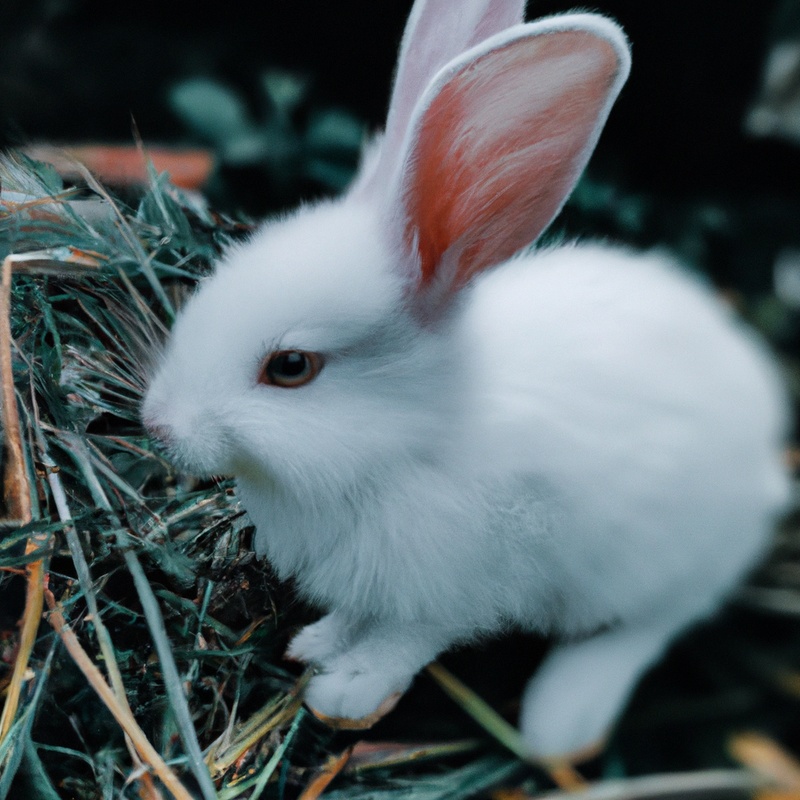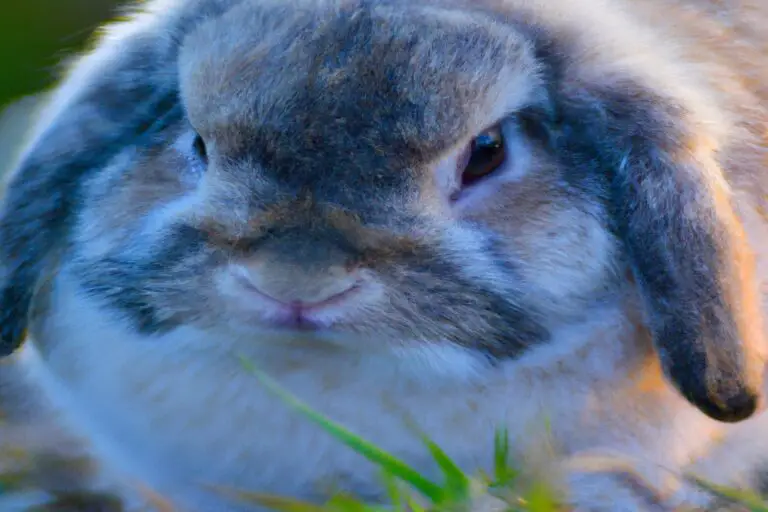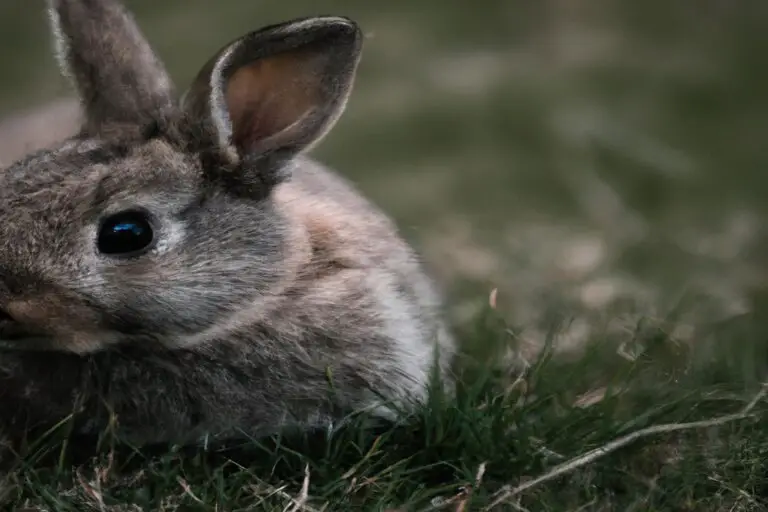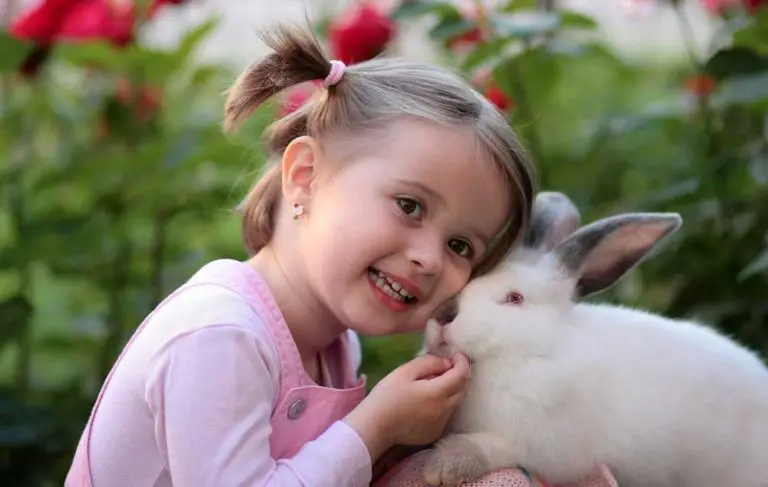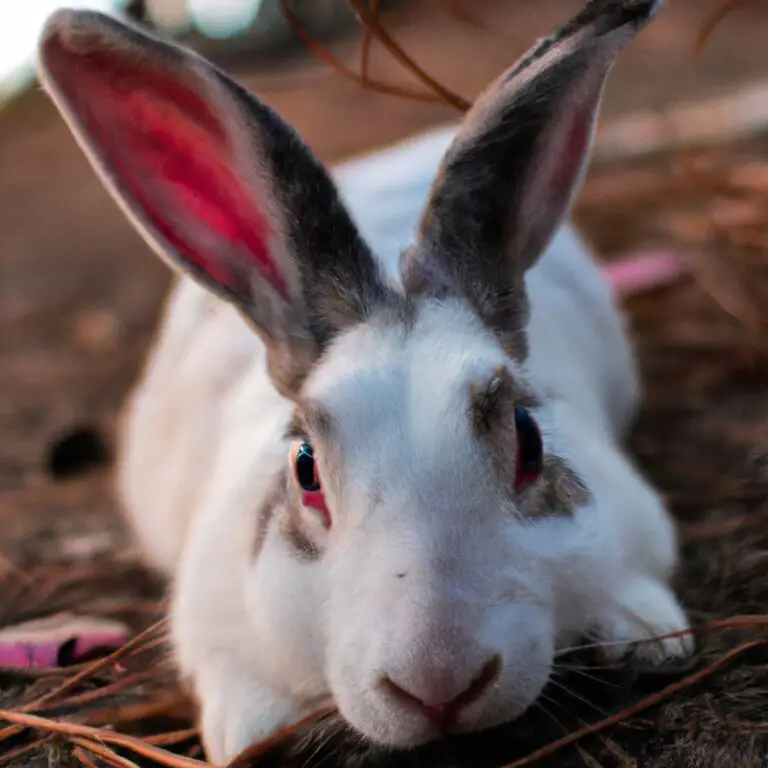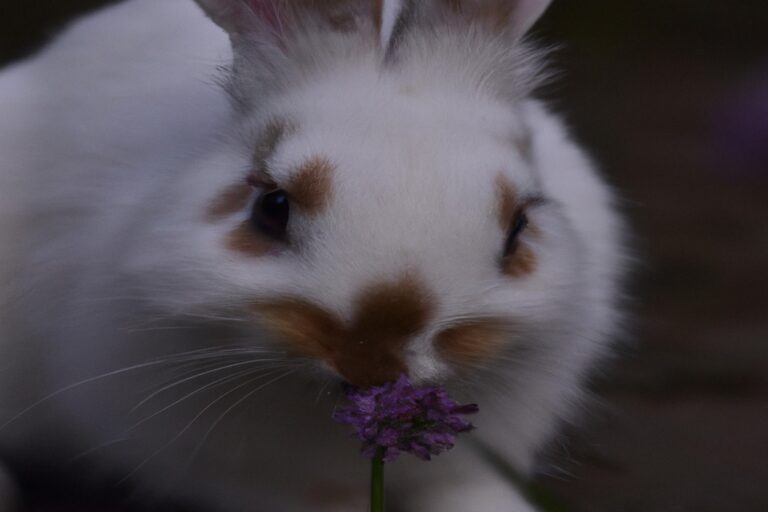Rabbit Behavior Decoded: Understanding Your Bunny’s Body Language
Key Takeaways:
- Ears position can indicate a rabbit’s mood and level of alertness.
- Tail movement can communicate a range of emotions and intentions.
- Binking is a common behavior that shows a rabbit’s happiness and contentment.
- Understanding your rabbit’s body language can help strengthen your bond and prevent misunderstandings.
Have you ever wondered what your bunny is trying to tell you? Your fluffy friend may not speak your language, but they communicate through their body language.
Understanding rabbit behavior is not only important for developing a strong bond with your bunny but also for promoting their well-being and happiness.
In this article, we will decode common rabbit body language signals, which will help you interpret your rabbit’s emotions. We will also explore some behavior challenges and solutions, and provide tips on enhancing your understanding of your rabbit’s behavior.
Get ready to unlock the secrets of your bunny’s body language!
| Behavior | Meaning |
| Thumping hind legs | Warning of danger |
| Teeth chattering | Sign of anger or frustration |
| Flopping on side | Relaxed and content |
| Binking (jumping and twisting mid-air) | Expressing joy and excitement |
| Stomping front paws | Sign of annoyance or disapproval |
Why Understanding Rabbit Behavior is Important
Understanding rabbit behavior is key to developing a strong bond with your bunny and promoting their well-being and happiness.
Developing a Strong Bond with Your Bunny
To develop a strong bond with your bunny, spend quality time together. This includes gentle petting, grooming, and talking to your bunny in a soft and soothing voice.
Offer your bunny treats and engage in interactive playtime.
Understand and respect your bunny’s body language, like when they want space or when they’re playful. Create a safe and comfortable environment for your bunny, providing plenty of hiding spots, toys, and a defined feeding and sleeping area.
Regularly providing love, attention, and patience will help strengthen your bond with your bunny.
Promoting Your Rabbit’s Well-Being and Happiness
Promoting your rabbit’s well-being and happiness is all about understanding their needs and providing a stimulating environment. Here are a few tips to help you create a happy home for your bunny:
- Space: Ensure that your rabbit has enough room to hop, explore, and exercise. A spacious enclosure or secure play area will keep them physically active and mentally engaged.
- Diet: Feed your rabbit a balanced diet that consists mainly of hay, fresh vegetables, and a limited amount of pellets. Avoid feeding them sugary or high-fat treats that could lead to obesity or health issues.
- Mental Stimulation: Keep your bunny mentally stimulated by providing toys, tunnels, and hiding spots. Rotate their toys regularly to prevent boredom and encourage exploration.
- Social Interaction: Rabbits are social animals, so make sure to spend time with your bunny each day. Gentle handling, petting, and grooming can strengthen the bond between you and your rabbit.
- Safe Environment: Ensure that your rabbit’s living area is safe and rabbit-proofed. Remove any harmful items, electrical cords, or toxic plants that could pose a danger to your bunny.

Common Rabbit Body Language Signals
Understanding your rabbit’s body language is key to deciphering their communication. By observing their ears, eyes, body posture, tail movements, and vocalizations, you can gain insights into their emotional state.
Ears: A Window into Your Bunny’s Mood
Your bunny’s ears can tell you a lot about their mood.
If their ears are held high and facing forward, they’re feeling calm and curious.
But if their ears are flattened against their back, it’s a sign of fear or aggression.
Watch for ears that are constantly moving or twitching, as this could indicate they’re on high alert.
Pay attention to your bunny’s ears, as they are a window into their emotions.

Eyes: What Your Rabbit’s Vision is Trying to Tell You
Ever wonder what your rabbit’s eyes are trying to tell you?
Rabbits have a unique way of communicating through their vision.
Here’s what you need to know:
- Wide open eyes: If your rabbit’s eyes are wide open, it means they are alert and curious. They are taking in their surroundings and assessing the situation.
- Half-closed eyes: This indicates relaxation and contentment. Your rabbit is feeling comfortable and at ease in their environment.
- Dilated pupils: When your rabbit’s pupils are large, it typically means they are excited, startled, or scared. They might be on high alert or feeling threatened.
- Slow blinking: Slowly blinking at your rabbit is a sign of trust and affection. It shows that you are not a threat and that they feel safe in your presence.
- Rapid blinking or squinting: If your rabbit is rapidly blinking or squinting, it could be a sign of discomfort or pain. It’s important to monitor their behavior and seek veterinary attention if needed.
Remember, paying attention to your rabbit’s eye signals can help you better understand their emotions and needs.
Body Posture: Understanding Your Rabbit’s Stance
Understanding your rabbit’s body posture is key to deciphering their emotions and needs. Here are some common rabbit stances and what they typically mean:
- Binkying: When your rabbit jumps in the air, twists their body, and kicks out their hind legs, it usually signifies happiness and excitement.
- Flopping: When your rabbit suddenly flops onto their side or back, it means they feel safe, relaxed, and content.
- Crouching: If your rabbit lowers their body close to the ground with their ears flattened, it suggests that they feel frightened or threatened.
- Standing tall: When your rabbit stands on their hind legs with their front paws lifted, they are curious or alert, exploring their environment.
- Lying stretched out: If your rabbit lies on their stomach with their body stretched out, it indicates relaxation and comfort.
Understanding these body postures will help you better communicate with your furry friend, enhancing your bond and ensuring their well-being.

Tail Movements: Decoding Your Bunny’s Tail Language
Rabbit’s tails can communicate a lot about how they’re feeling.
If your bunny’s tail is relaxed and down, it usually means they’re feeling calm and content.
On the other hand, if their tail is raised up, it could indicate excitement or curiosity.
Watch out for tails that are tucked tightly against their body, as this may suggest fear or stress.
Pay attention to the speed of their tail movements too, as rapid flicking can signal irritation or aggression.
Understanding your bunny’s tail language can help you better understand their emotions and respond accordingly.
Vocalizations: Interpreting Your Rabbit’s Sounds
Rabbits have a variety of vocalizations that they use to communicate with us and other rabbits. Here are some common sounds and what they might mean:
- Growling or grunting: Your rabbit may growl or grunt when they feel threatened or upset. It’s their way of letting you know to back off and give them space.
- Purring: Yes, rabbits can purr too! It’s usually a sign of contentment and relaxation. You might hear your rabbit purr when you’re petting them or when they’re enjoying your company.
- Whining or whimpering: If your rabbit is whining or whimpering, it could be a sign of pain or discomfort. They might need to see a vet, so it’s important to pay attention to this sound.
- Screaming or shrieking: This is a high-pitched, piercing sound that rabbits make when they’re in extreme pain or fear. If you hear this, it’s crucial to act quickly and seek immediate veterinary attention.
- Honking or grunting: Sometimes rabbits make honking or grunting sounds, especially when they’re excited or feeling playful. It’s their way of expressing their enthusiasm and joy.
Remember, every rabbit is different, and they may have their own unique vocalizations. By paying attention to your rabbit’s sounds and observing their accompanying behavior, you can better understand what they’re trying to communicate with you.
Interpreting Your Rabbit’s Emotions
Understanding your rabbit’s emotions is key to forming a strong bond and providing proper care. Here’s how you can interpret their happiness, fear, aggression, and bonding behaviors.
Happiness and Contentment
Happiness and contentment in rabbits can be observed through their body language. A joyful bunny will often display a relaxed posture, with their ears up and eyes bright.
They may also engage in binkying, which is a merry hop and twist in the air.
Contented rabbits will groom themselves or their companions, and may even flop onto their side to rest peacefully. It’s important to create a safe and stimulating environment for your rabbit to foster happiness and contentment.
Fear and Anxiety
Fear and anxiety are common emotions that rabbits experience. Signs of fear may include thumping their back leg, freezing in place, or hiding.
Anxiety can manifest through behaviors like excessive grooming or chewing.
To help alleviate fear and anxiety in your rabbit, create a calm and safe environment by providing hiding spots, minimizing loud noises, and maintaining a consistent routine. Building trust through positive interactions and gentle handling can also help your bunny feel more secure.
Aggression and Territoriality
Aggression and territoriality are common behaviors in rabbits.
When a rabbit feels threatened or startled, it may display aggression by biting, scratching, or thumping its hind legs.
It’s important to remember that this behavior is a natural response, not a sign of the rabbit being mean.
Territoriality is also common in rabbits.
They mark their territory by spraying urine or leaving droppings in certain areas.
This behavior is their way of showing ownership and communicating with other rabbits.
To address aggression and territoriality in your rabbit, it’s crucial to provide them with a safe and spacious environment.
Regular interaction and socialization can also help reduce these behaviors.
Consulting with a veterinarian or a rabbit behavior expert can provide additional guidance on managing aggression and territoriality.
Bonding and Affection
Bonding and affection are vital for building a strong relationship with your rabbit. Spend quality time together, such as gentle petting and interactive play, to foster trust and connection.
Your bunny may show affection by grooming you or nuzzling your hand.
It is essential to respect their boundaries and allow them to approach you on their terms. Remember to provide a safe, comfortable environment for your rabbit to feel secure and loved.
Rabbit Behavior Challenges and Solutions
Rabbit Behavior Challenges and Solutions: Overcoming common issues with chewing, digging, and aggression towards humans or other pets.
Chewing Behavior: Dealing with Destructive Habits
When your bunny starts chewing on things they shouldn’t, it can be frustrating.
Luckily, there are ways to deal with this destructive behavior.
First, make sure your rabbit has plenty of appropriate chew toys to keep them entertained.
Second, provide them with a distraction, like hiding treats or food puzzles.
Third, bunny-proof your home by removing access to cords and other tempting items.
Remember, patience and consistency are key when dealing with chewing habits.
Digging Behavior: Providing Suitable Alternatives
Rabbits have a natural instinct to dig, so it’s important to provide suitable alternatives to satisfy this behavior.
One option is to create a designated digging area for your bunny, filled with safe materials like straw or shredded paper.
You can also offer digging toys, such as cardboard boxes filled with hay or treats.
Another idea is to provide tunnels or burrows for your rabbit to explore and dig in.
Remember to regularly clean and refresh these alternatives to keep them enticing for your bunny.
Aggression Toward Humans or Other Pets: Strategies for Managing and Resolving Conflicts
When dealing with aggression in rabbits towards humans or other pets, it’s important to approach the situation with patience and understanding. Here are some strategies you can use to manage and resolve conflicts:
- Provide a safe space: Create separate areas for your rabbit and other pets to prevent direct contact and potential territorial disputes.
- Positive reinforcement: Use treats and praise to reward good behavior and discourage aggression. This helps your rabbit associate positive experiences with interactions.
- Slow introductions: When introducing your rabbit to new pets or people, do so gradually and under controlled circumstances, allowing them to adjust and get to know each other at their own pace.
- Seek professional help: If the aggression persists or escalates, consult a veterinarian or a qualified animal behaviorist for guidance and support.
Remember, every rabbit is unique, so it’s important to tailor your approach to their individual needs and behavior. Patience, consistency, and a calm environment are key in managing and resolving aggression in rabbits.
How to Enhance Your Understanding of Your Rabbit’s Behavior
To enhance your understanding of your rabbit’s behavior, try spending quality time observing and interacting with your bunny, educating yourself about rabbit behavior, and seeking professional guidance from a rabbit behavior specialist.
Observation and Interaction: Spending Quality Time with Your Bunny
Observation and Interaction: Spending Quality Time with Your Bunny To truly understand your bunny’s behavior, it’s important to spend quality time observing and interacting with them.
Here are a few tips to help you establish a strong connection:
- Set aside dedicated time each day to spend with your bunny. This can involve sitting near their enclosure or letting them roam in a rabbit-proofed area.
- Observe their body language closely. Pay attention to the way they move, eat, and interact with their surroundings. This will help you understand their individual personality and preferences.
- Interact with your bunny using gentle touch and soft spoken words. Offer treats and positive reinforcement to create a bond of trust.
- Take note of any changes in behavior or health. Regular observation will enable you to spot potential issues early on and seek appropriate veterinary care if needed.
- Provide mental and physical stimulation through toys, hideouts, and opportunities for exploration. This will keep your bunny engaged and prevent boredom.
Remember, spending quality time with your bunny strengthens the bond between you and helps you better understand their unique behaviors and needs.
Educating Yourself: Researching and Learning about Rabbit Behavior
To better understand your rabbit’s behavior, it’s important to educate yourself by researching and learning about their habits. Start by reading books and articles on rabbit behavior, which can provide valuable insights.
Additionally, join online forums or communities dedicated to rabbits, where you can ask questions and learn from experienced rabbit owners.
Observing your rabbit’s body language and spending quality time with them will also give you a deeper understanding of their unique behaviors. Stay curious and open-minded, and always consult a veterinarian for any specific concerns.
Seeking Professional Guidance: Consulting a Rabbit Behavior Specialist
If you’re struggling to understand your rabbit’s behavior, consulting a rabbit behavior specialist can be a great option. These professionals have extensive knowledge and experience in rabbit behavior and can provide you with valuable insights and guidance.
From addressing common behavioral issues to helping you create an enriching environment for your bunny, a rabbit behavior specialist can help you better understand and meet your rabbit’s needs.
With their expertise, you’ll be equipped with the tools to build a stronger bond with your furry friend and create a happy and harmonious living environment.
Frequently Asked Questions about Rabbit Behavior
Why does my rabbit thump its hind legs?
Rabbits thump their hind legs as a warning signal. It’s their way of alerting other rabbits or animals of potential danger.
They use this behavior to communicate and stay safe in their environment.
Your rabbit might thump if it hears a loud noise, senses something unusual, or feels threatened. It’s important to pay attention to your rabbit’s surroundings and provide a secure and peaceful environment for them to minimize thumping.
How can I tell if my rabbit is happy?
You can tell if your rabbit is happy by observing its body language.
A happy rabbit will have relaxed and upright ears, with bright and alert eyes.
It will also have a relaxed body posture, with its hind legs stretched out and tail held up or wagging gently.
A content rabbit may also engage in playful behaviors like binkying (jumping and twisting in the air) or flopping onto its side.
Additionally, a happy rabbit will have a healthy appetite and show interest in its surroundings.
Is it normal for rabbits to growl or hiss?
Yes, it is normal for rabbits to growl or hiss. While rabbits are generally gentle and quiet animals, they may make these sounds when they feel threatened or frightened.
Growling or hissing is a way for them to communicate their discomfort or assert their boundaries.
If your rabbit is growling or hissing, it’s important to give them space and try to identify the source of their distress, such as loud noises or unfamiliar surroundings.
Why does my rabbit lunge or nip at me?
Rabbits may lunge or nip at you for various reasons. It could be a sign of fear or anger, indicating that they feel threatened or territorial.
They may also be trying to establish dominance or communicate their discomfort.
Lack of socialization, pain, or hormonal changes can also contribute to this behavior. It’s important to observe their body language and seek professional guidance if needed.
A safe and calm environment, along with gradual bonding and positive reinforcement, can help address this issue.
What should I do if my rabbit shows signs of aggression towards other pets?
If your rabbit shows signs of aggression towards other pets, it’s important to address the issue to ensure everyone’s safety.
Here are a few steps you can take to manage the situation:
- Separate the pets: Keep your rabbit and the other pet separated to prevent any potential harm. This can be done by creating separate living spaces or using gates and barriers.
- Consult a veterinarian: Schedule a visit with a veterinarian who specializes in rabbit care. They can assess your rabbit’s behavior and provide guidance on how to address the aggression.
- Gradual introductions: If you wish to reintroduce the pets, do so slowly and under supervision. Start with brief encounters and gradually increase the duration over time. Reward positive behavior with treats and praise.
- Training and socialization: Consider working with a professional animal behaviorist or rabbit trainer to help address any underlying issues causing the aggression. They can provide specialized training techniques to modify your rabbit’s behavior.
Remember, each rabbit is unique, and it may take time and patience to address aggression towards other pets.
It’s crucial to prioritize the safety and well-being of all animals involved.
How can I prevent my rabbit from chewing on furniture and cables?
One way to prevent your rabbit from chewing on furniture and cables is to provide plenty of appropriate chew toys. This will help satisfy their natural chewing instincts.
Additionally, you can try using bitter-tasting sprays or covers on furniture and cables to discourage chewing.
Make sure to bunny-proof your home by keeping cables out of reach or covering them with cord protectors. Providing a designated space for your rabbit to explore and play can also help redirect their chewing behavior.
Final Verdict
Understanding rabbit behavior is crucial for developing a strong bond with your bunny, promoting their well-being, and resolving behavior challenges. By decoding their body language, such as their ears, eyes, body posture, tail movements, and vocalizations, you can gain a deeper understanding of their emotions.
This knowledge allows you to address specific needs, such as happiness, fear, aggression, and bonding.
To enhance your understanding, spending quality time with your rabbit, educating yourself, and seeking professional guidance are recommended. By delving into their behavior, you can create a harmonious and fulfilling relationship with your fluffy companion.

